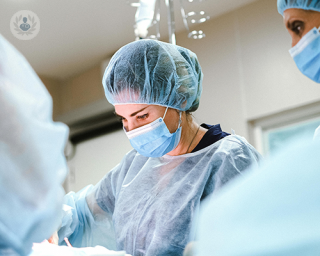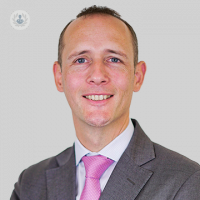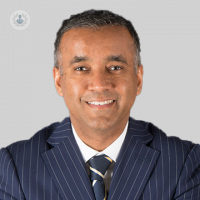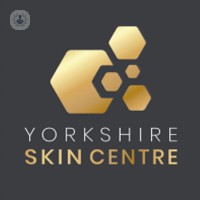What is body contouring?
Body contouring, also known as body sculpting or body remodelling, includes all techniques, surgical or non-surgical, that aim to improve the skin’s appearance and achieve smoother contours. Body contouring is commonly done following dramatic weight loss, for example, after bariatric surgery to remove excess skin.

Why is it done?
Body contouring allows the removal of loose, sagging skin that can remain after weight loss. Significant weight loss may occur after weight loss surgery, following pregnancy, or from changes in diet. The loose skin that remains is not possible to shift with further diet and exercise, and would usually require treatment to smooth or remove.
What does it consist of?
Body contouring includes several options, both surgical and non-surgical. Among the non-surgical options, in addition to anti-cellulite creams and lotions that have only a superficial effect, is radiofrequency treatment that can eliminate fatty tissue without affecting the surrounding structures and, therefore, without damaging the body.
The most commonly used surgical options are tummy tuck (abdominoplasty), buttock lift, breast lift, arm lift (brachioplasty) and thigh lift. Liposuction is also used to remove excess fatty tissue.
Preparation for body contouring
Prior to surgical intervention, the specialist would carry out certain clinical tests to ensure you are suitable for the requested procedure(s). Any specific preparations needed for the given procedure would be discussed in detail beforehand with your surgeon. For most surgeries, it is recommended to suspend the use of tobacco and anti-inflammatory medications.
Aftercare
Some of the procedures done for body contouring can be performed on an outpatient basis. However, hospital stay will be required for more extensive cases. Your doctor will explain the aftercare expectations and any necessary follow-ups required.
What are the risks associated with body contouring?
There are quite a few risks associated with body contouring and the various surgical and non-surgical treatments involved. The main ones include the following:
- bleeding
- blood clots
- asymmetry
- nerve damage
- hair loss
- haematoma
- infection
- skin discolouration
- scarring
- skin rash
- swelling
- red skin
Body contouring
Mr Simon Eccles - Plastic surgery
Created on: 07-20-2016
Updated on: 04-24-2023
Edited by: Conor Lynch
What is body contouring?
Body contouring, also known as body sculpting or body remodelling, includes all techniques, surgical or non-surgical, that aim to improve the skin’s appearance and achieve smoother contours. Body contouring is commonly done following dramatic weight loss, for example, after bariatric surgery to remove excess skin.

Why is it done?
Body contouring allows the removal of loose, sagging skin that can remain after weight loss. Significant weight loss may occur after weight loss surgery, following pregnancy, or from changes in diet. The loose skin that remains is not possible to shift with further diet and exercise, and would usually require treatment to smooth or remove.
What does it consist of?
Body contouring includes several options, both surgical and non-surgical. Among the non-surgical options, in addition to anti-cellulite creams and lotions that have only a superficial effect, is radiofrequency treatment that can eliminate fatty tissue without affecting the surrounding structures and, therefore, without damaging the body.
The most commonly used surgical options are tummy tuck (abdominoplasty), buttock lift, breast lift, arm lift (brachioplasty) and thigh lift. Liposuction is also used to remove excess fatty tissue.
Preparation for body contouring
Prior to surgical intervention, the specialist would carry out certain clinical tests to ensure you are suitable for the requested procedure(s). Any specific preparations needed for the given procedure would be discussed in detail beforehand with your surgeon. For most surgeries, it is recommended to suspend the use of tobacco and anti-inflammatory medications.
Aftercare
Some of the procedures done for body contouring can be performed on an outpatient basis. However, hospital stay will be required for more extensive cases. Your doctor will explain the aftercare expectations and any necessary follow-ups required.
What are the risks associated with body contouring?
There are quite a few risks associated with body contouring and the various surgical and non-surgical treatments involved. The main ones include the following:
- bleeding
- blood clots
- asymmetry
- nerve damage
- hair loss
- haematoma
- infection
- skin discolouration
- scarring
- skin rash
- swelling
- red skin


High-definition liposuction: Shape your body and enhance your silhouette
By Mr Aftab Siddiqui
2024-11-21
High-definition liposuction, the latest evolution in body contouring technology, offers precision sculpting and emphasised body contouring to achieve not only a slimmer silhouette but also enhanced muscle definition and tone. Here, Mr Aftab Siddiqui, renowned consultant plastic and cosmetic surgeon, provides an expert insight. See more


Non-invasive body contouring
By Mr Foued Hamza
2024-11-21
Do you desire your dream body but dread the thought of undergoing surgery? Non-invasive body contouring treatments exist, enabling a new range of possibilities. Mr Foued Hamza is ranked as one of the best cosmetic surgeons in Europe, and here he explains all about these non-invasive ways to contour the body See more


What does calf slimming involve?
By Dr Firas Al-Niaimi
2024-11-20
In this informative guide, we learn about how calf slimming can be achieved with precise Botox injections. See more


What are the benefits of choosing a female plastic surgeon for your body contouring?
By Miss Sarita Vamadeva
2024-11-18
When considering body contouring, choosing the right plastic surgeon is essential to achieve your desired results and ensure a positive experience. See more
Experts in Body contouring
-
Mr Simon Eccles
Plastic surgeryExpert in:
- Facelift
- Facial reconstruction
- Children's plastic surgery
- Rhinoplasty (nose job)
- Blepharoplasty
- Body contouring
-
Mr Kieran Power
Plastic surgeryExpert in:
- Breast surgery
- Tummy tuck (abdominoplasty)
- Skin cancer
- DIEP breast reconstruction
- Breast reconstruction
- Body contouring
-
Mr Foued Hamza
Plastic surgeryExpert in:
- Buttock augmentation
- Buttock lift
- Breast fat transfer
- Liposuction
- Breast reduction
- Body contouring
-
Mr Fateh Ahmad
Plastic surgeryExpert in:
- Botulinum toxin (Botox™)
- Facial plastic surgery
- Breast surgery
- Body contouring
- Skin cancer
- Dermal fillers
-
Mr Philip Lim
Plastic surgeryExpert in:
- Breast surgery
- Body contouring
- Tummy tuck (abdominoplasty)
- Otoplasty
- Skin cancer
- Blepharoplasty
- See all

Yorkshire Skin Centre
Yorkshire Skin Centre
1 Sizers Court, Yeadon
No existe teléfono en el centro.
By using the telephone number provided by TOP DOCTORS, you automatically agree to let us use your phone number for statistical and commercial purposes. For further information, read our Privacy Policy
Top Doctors

The Lister Hospital - part of HCA Healthcare
The Lister Hospital - part of HCA Healthcare
Chelsea Bridge Road, London
No existe teléfono en el centro.
By using the telephone number provided by TOP DOCTORS, you automatically agree to let us use your phone number for statistical and commercial purposes. For further information, read our Privacy Policy
Top Doctors

London International Patient Services (LIPS)
London International Patient Services (LIPS)
5 Devonshire Place, W1G 6HL
No existe teléfono en el centro.
By using the telephone number provided by TOP DOCTORS, you automatically agree to let us use your phone number for statistical and commercial purposes. For further information, read our Privacy Policy
Top Doctors
-
Yorkshire Skin Centre
1 Sizers Court, Yeadon, LeedsExpert in:
- Dermatology
- Clinical Dermatology
- Cosmetic Dermatology
- Facial aesthetics
-
The Lister Hospital - part of HCA Healthcare
Chelsea Bridge Road, London , Central LondonExpert in:
- Cancer
- Cardiology
- Orthopaedic surgery
- Pregnancy
- Physiotherapy
- Women’s health
-
London International Patient Services (LIPS)
5 Devonshire Place, W1G 6HL, W1G Marylebone LondonExpert in:
- Orthopaedic spinal surgery
- Plastic surgery, reconstructive and aesthetics
- Hand and wrist
- Otolaryngology
- Foot and ankle
- Knee
- Most viewed diseases, medical tests, and treatments
- Hormone therapy
- Migraine
- Nutrition
- Weight loss injections
- Endermologie
- Polynucleotides
- Endovenous laser treatment (EVLA)
- Head and neck cancer
- Neck lump
- Acellular dermal matrix (ADM)







